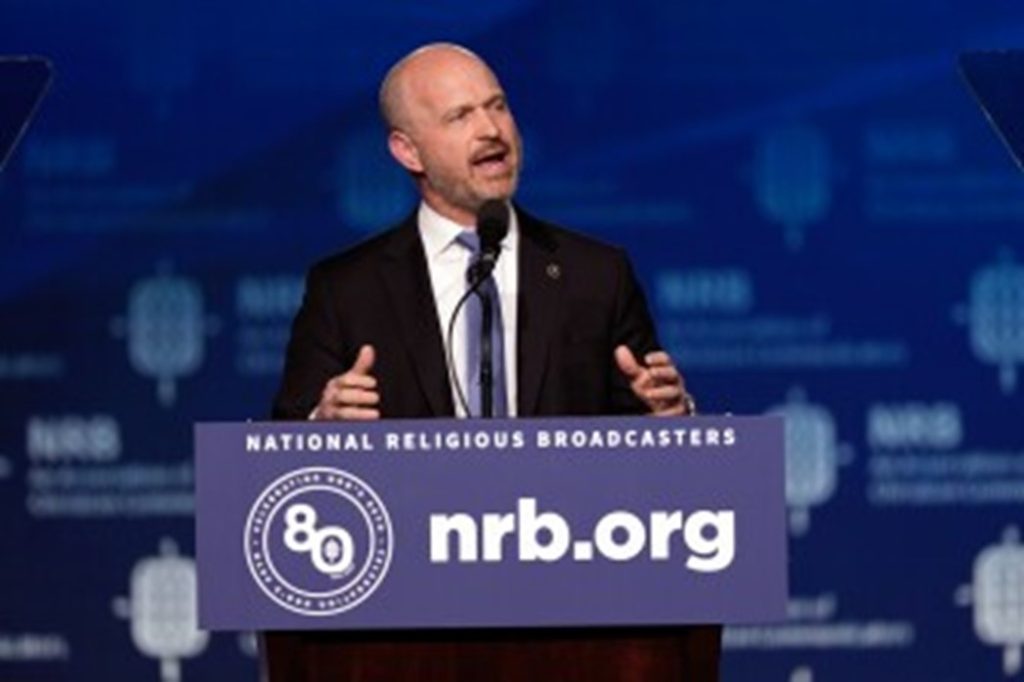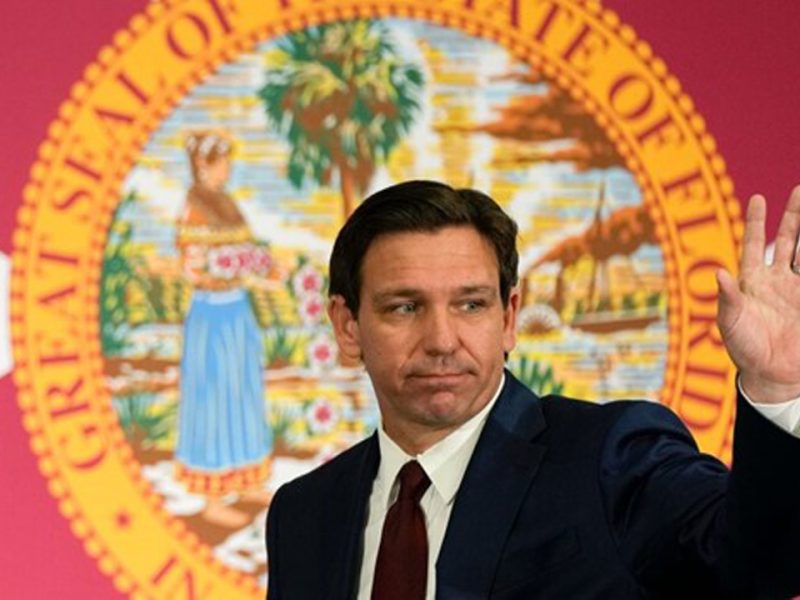
What Would Happen to K-12 in a 2nd Trump Term? A Detailed Policy Agenda Offers Clues
The Heritage Foundation-led Project 2025 has conservative plans for every corner of the federal government, including the Department of Education
Education Week | By Matthew Stone | March 25, 2024
What would Donald Trump do in the realm of K-12 if voters return the former president to the White House?
He and his campaign haven’t outlined many specifics, but a recently published document that details conservative plans to completely remake the executive branch offers some possibilities. Among them:
- Title I, the $18 billion federal fund that supports low-income students, would disappear in a decade.
- Federal special education funds would flow to school districts as block grants with no strings attached, or even to savings accounts for parents to use on private school or other education expenses.
- The U.S. Department of Education would be eliminated.
- The federal government’s ability to enforce civil rights laws in schools would be scaled back.
The proposals are contained in comprehensive policy agenda that’s part of a Heritage Foundation-led initiative called Project 2025: Presidential Transition Project, which includes nearly 900 pages of detailed plans for virtually every corner of the federal government and a database of potential staffers for a conservative administration. It will also feature a playbook for the first 180 days of a new term.
Project 2025 involves former Trump administration officials and other allies of the former president, as well as dozens of aligned advocacy organizations. One of those is Moms for Liberty, the Florida-based group that rose to national prominence fighting school boards over COVID-19 safety protocols and has endorsed conservative school board candidates across the country in recent years.
On the campaign trail, Trump has said that parents should elect school principals, called for merit pay for teachers and the abolition of teacher tenure, promised to cut federal funding to schools pushing progressive social ideas, and pledged to establish universal school choice.
But because he’s released little in the way of detailed plans, Project 2025’s 44-page agenda for the U.S. Department of Education offers the clearest picture yet of the education priorities Trump could pursue in a second term, and how a second Trump administration could use the federal government to advance conservative policies like private school choice and parents’ rights that have taken root in many Republican-led states.
Despite the involvement of so many Trump allies, the former president’s campaign hasn’t officially endorsed Project 2025. His campaign didn’t respond to requests for comment from Education Week.
Nothing more than ‘a statistics-gathering agency’
Project 2025’s education agenda revolves around shrinking the federal government’s footprint on public education.
“The federal government should confine its involvement in education policy to that of a statistics-gathering agency that disseminates information to the states,” the document reads.
Under the Project 2025 agenda, states would be able to opt out of federal education programs, whose “regulatory burden far exceeds the federal government’s less than 10 percent financing share of K–12 education,” the document asserts.
States would also have full authority to decide how to spend Title I funds, which currently go to schools with large populations of low-income students.
Under the Project 2025 plan, those funds would first flow to states as “no-strings-attached” block grants before they’re phased out in a decade. Parents of students attending Title I schools could even have access to the federal funds in “micro-education savings accounts” to pay for private education or supplemental services for their kids. The plan outlines similar ambitions for funds distributed under the Individuals with Disabilities Education Act, the nation’s special education law, though it doesn’t propose phasing them out.
“The future of education freedom and reform in the states is bright and will shine brighter when regulations and red tape from Washington are eliminated,” the document reads.
Rick Hess, director of Education Policy Studies at the right-leaning American Enterprise Institute, said he’s sympathetic to the goal of reducing administrative requirements that accompany federal programs, but he hasn’t seen evidence that there’s enough support among congressional Republicans to end or radically transform Title I or IDEA.
(House Republicans approved a budget last year that would cut Title I by 80 percent, but that plan was bound to fail with Democrats in charge of the Senate and White House.)
“It is picking a fight where you risk getting portrayed as insensitive to the needs of low-income kids [and] kids with special needs,” Hess said. “I’m not sure that the ratio of the bad publicity you risk to the likelihood of winning winds up paying off in the end.”
While school districts would welcome less paperwork, “our members would not want reduced administrative burden to come at this cost. This is too high of a cost,” said Noelle Ellerson Ng, associate executive director for advocacy and governance at AASA, The School Superintendents Association.
Project 2025 is “well packaged, but their ends aren’t focused on student learning and attainment. They are driven first by a focus on reducing the size of government and reducing spending,” she said.
Title I and IDEA are the federal government’s primary mechanisms to ensure that schools that can’t raise much revenue from local property taxes have at least a baseline level of resources, said Katherine Dunn, who runs the Opportunity to Learn program for the Advancement Project, a national civil rights organization.
So, allowing those funds to flow to parents via savings accounts “really does move toward this idea that education is a personal good” rather than “a collective value,” she said.
Relocating programs across government
With its vision of eliminating the Education Department, Project 2025 proposes moving existing education programs to other federal agencies.
IDEA would become the purview of the administration for community living within the U.S. Department of Health and Human Services. Title I would transfer to DHHS’ administration for children and families before it’s ultimately phased out. The National Center for Education Statistics—the main data collection arm of the education department—would become part of the U.S. Census Bureau.
The department’s office for civil rights—which investigates potential civil rights violations in schools—would move to the Justice Department and would only be able to enforce civil rights laws through litigation, ending its common practice of negotiating settlements with school districts to change their practices.
The office would also have to drop pending investigations under Title IX, the federal law prohibiting sex discrimination, into allegations of discrimination based on students’ or employees’ sexual orientation or gender identity. In addition, the office would stop opening new Title IX investigations based on sexual orientation and gender identity discrimination .

(The Biden administration has said it considers sex discrimination to include sexual orientation and gender identity, and has proposed—but continually delayed—rules that would make that definition part of federal regulations. Project 2025 proposes reverting to Title IX rules developed in the first Trump administration.)
The civil rights office would also stop investigating schools for “disparate impact” in school discipline—the idea that school discipline policies that disproportionately affect students in one racial or ethnic group might violate federal law, even if those policies are neutral on their face and applied evenhandedly.
“Unfortunately, federal overreach has pushed many school leaders to prioritize the pursuit of racial parity in school discipline indicators—such as detentions, suspensions, and expulsions—over student safety,” the Project 2025 Education Department document reads.
Eliminating disparate impact as the basis for civil rights investigations removes the only avenue available for people to challenge school policies whose impact might be racially discriminatory, said Dunn of the Advancement Project, who was previously a lawyer in the Education Department’s office for civil rights.
“You don’t address racism that happens in our schools just through these individual different treatment investigations, although those are critically important as well,” she said, referring to probes into allegations of individual discrimination.
Further, moving OCR to the Justice Department endangers a source of technical assistance to school districts, Dunn said.
“It’s staffed by people who deal with the application of civil rights laws in schools day to day,” she said. “They’re … really thinking about remedies that make sense in the context of education.”
What a new administration can do without Congress
Many of the topline K-12 priorities outlined in Project 2025—such as eliminating the Department of Education, using federal funds to expand school choice, and passing a federal parents’ bill of rights similar to those passed in a number of Republican-led states—would require congressional approval, making them a heavy lift.
Other changes could happen with executive action alone. Those include:
- Stopping the Biden administration’s rulemaking to assert that Title IX bans sexual orientation and gender identity discrimination, and halting enforcement of the new rule if it’s been completed by next year;
- Limiting the scope of new and pending civil rights office investigations;
- Rescinding an Obama-era regulation that requires some districts to use a portion of their IDEA funds to address the root causes of racial disparities in students identified for special education by ; and
- Rolling back a 2022 Biden administration regulation that added requirements for new charter schools seeking federal startup funds.
Project 2025 is a sign that Republicans, once they’ve returned to power, intend to use the tools of the executive branch more deliberately to achieve their education goals, said Hess, who is a regular Education Week Opinion contributor.
Traditionally, he said, that’s something Democratic presidents have done better than Republicans, who tend to “hit the pause button” on Democratic changes rather than aggressively pursue their own.
The Project 2025 approach “is kind of new,” he said. “And that’s probably a consequence, because even folks that used to be regarded as mainstream, kind of measured conservatives 10 or 20 years ago, they’ve gotten so frustrated by what feels like a rigged game they’ve been radicalized.”





